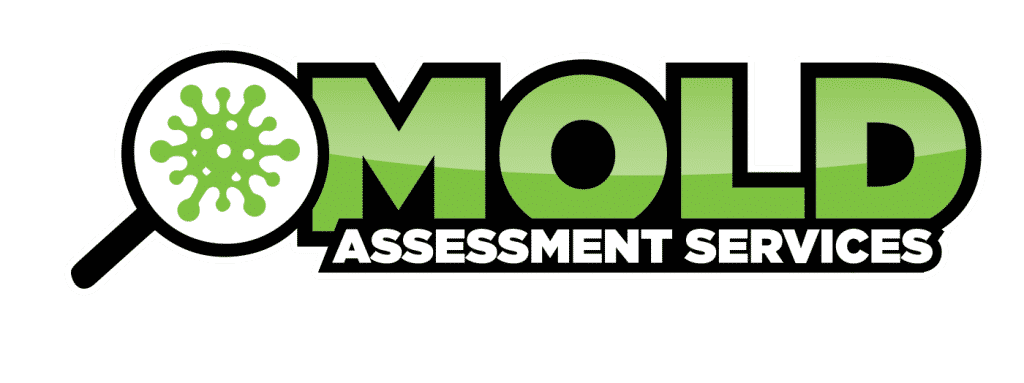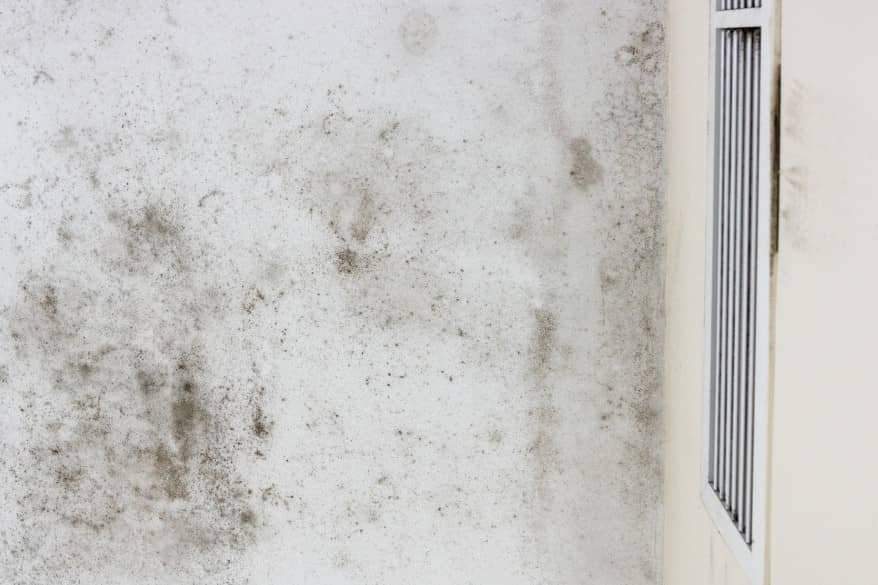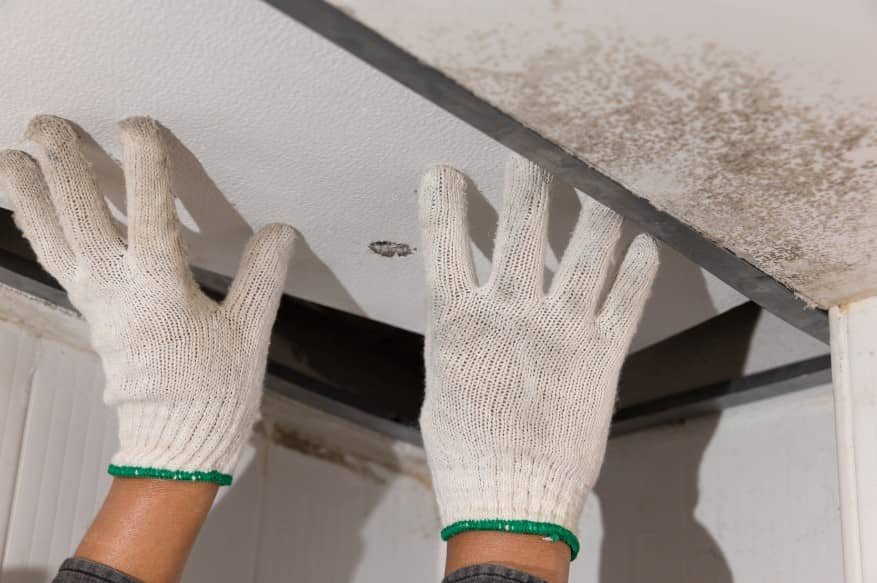Mold exposure poses significant health risks that can have astonishing consequences for individuals and families. From respiratory issues to allergies, the impact of mold on our health is a serious concern that cannot be ignored. Many are now reporting feeling sick from mold exposure.
Various types of mold, such as Stachybotrys and Aspergillus, produce toxins that can cause a range of symptoms, including coughing, wheezing, and skin irritation. Prolonged exposure can lead to more severe conditions such as asthma and chronic sinus infections. It’s imperative to address mold growth promptly, as neglecting it can worsen health issues and lead to costly property damage.
Types of Mold and Where They Grow
Understanding the different types of mold and their preferred environments is crucial in addressing the risks of getting sick from mold exposure and ensuring a healthy living space.
Meet the Unwanted Guests
In terms of mold, there are unwelcome varieties such as black mold, Aspergillus, and Cladosporium that can thrive in indoor environments, posing health risks to occupants.
Black mold, known scientifically as Stachybotrys chartarum, is often recognized by its dark green or black color and can commonly be found in areas with water damage and high humidity levels.
Aspergillus, on the other hand, is a widespread mold genus, appearing in green, yellow, or white variations, commonly found indoors and in soil. It is known to cause respiratory issues in those with weakened immune systems.
Similarly, Cladosporium is a common outdoor mold that can also find its way indoors under the right conditions, causing allergic reactions and asthma attacks in susceptible individuals.
Their Favorite Hideouts
Mold has a penchant for thriving in moisture-rich environments, making areas such as bathrooms, basements, and attics vulnerable to mold growth and the associated health risks.
Excessive humidity in bathrooms, especially when ventilation is inadequate, can create the perfect breeding ground for mold. Leaks in pipes or roofs can introduce moisture into basements and attics, promoting mold colonization. Additionally, condensation on windows, poorly insulated walls, and damp carpets can also contribute to the formation of mold in households, posing a range of health issues, from respiratory problems to aggravated allergies.
Conditions that Mold Loves
Mold thrives in conditions with high moisture levels, poor ventilation, and inadequate prevention measures, making it crucial to address these factors to mitigate the risks of being sick from mold exposure.
High humidity, leaky pipes, and water seepage can create a conducive environment for mold growth. Without proper moisture control, mold spores can spread and colonize various surfaces within the indoor environment. Insufficient ventilation traps moisture and promotes mold proliferation. Incorporating proper ventilation such as exhaust fans in bathrooms and kitchens and ensuring that air circulates freely throughout the home is essential. Implementing proactive prevention strategies such as regular inspection for leaks, maintaining adequate air circulation, and using dehumidifiers in areas prone to dampness are crucial in discouraging mold growth.
 health impacts of mold in indoor environments are increasingly recognized, with various types of mold like Aspergillus and Cladosporium posing significant risks. Individuals often report allergies and respiratory issues due to mold exposure symptoms. It’s essential to understand the different mold types and their preferred habitats to prevent mold growth effectively.” class=”wp-image-24947″/>
health impacts of mold in indoor environments are increasingly recognized, with various types of mold like Aspergillus and Cladosporium posing significant risks. Individuals often report allergies and respiratory issues due to mold exposure symptoms. It’s essential to understand the different mold types and their preferred habitats to prevent mold growth effectively.” class=”wp-image-24947″/>Sick from Mold Exposure: Can You Die from Mold?
The health impacts of mold exposure extend beyond mere discomfort, with severe consequences that raise the question: Can you die from mold? Exposure to mold, whether through skin contact, inhalation, or ingestion, can lead to a range of health issues, from mild allergic reactions to serious conditions like neurological damage and, in severe cases, death. Aspergillus, a common indoor mold, is responsible for a significant portion of mold-related hospitalizations, with high fatality rates in severe cases. Reactions to mold vary widely among individuals, highlighting the importance of professional mold removal to safely address this common indoor problem.
Allergies and Respiratory Issues
Mold exposure in homes can lead to a range of health problems, particularly allergies and respiratory issues. When mold spores are inhaled, they can trigger allergic reactions, which often manifest as sneezing, runny nose, red eyes, and skin rashes. For individuals with asthma or other respiratory conditions, mold can be even more hazardous. It can aggravate these conditions, leading to symptoms like wheezing, coughing, and shortness of breath. Prolonged exposure to mold may even cause the development of respiratory infections or exacerbate existing lung problems. Hence, it’s crucial to regularly check homes for mold to ensure a healthy living environment, especially for those with existing allergies and respiratory issues.
The Dreaded Black Mold
Black mold, often associated with severe health risks due to its toxic nature and mycotoxin production, poses a significant danger to individuals and necessitates prompt action and professional intervention.
Exposure to black mold can lead to a range of health issues, including respiratory problems, allergic reactions, and even neurological symptoms. Common symptoms of black mold exposure may include coughing, wheezing, nasal congestion, throat irritation, and skin rashes. Prolonged exposure to black mold can trigger more severe conditions such as asthma, bronchitis, and sinus infections. It is crucial to address any signs of black mold in indoor environments promptly to mitigate the associated health risks.
Real Stories, Real People
Real-life accounts of individuals impacted by mold exposure serve as stark reminders of the serious health risks associated with mold, underscoring the importance of seeking professional help and diagnosis.
In many cases, individuals exposed to mold in their homes or workplaces have reported a wide range of health symptoms, including respiratory issues, allergic reactions, and even neurological problems. These stories highlight the necessity of recognizing the signs of mold exposure and understanding the potential severity of its impact on health. Seeking professional assistance is crucial for promptly addressing mold-related concerns and preventing further health complications.
Mold Remediation and Prevention
Effective mold remediation and prevention strategies are essential for creating a healthy living environment, safeguarding against the risks posed by mold exposure and related health triggers.
Your Mold-Fighting Superhero
Engaging a professional mold remediation specialist can be your ultimate ally in combating mold exposure risks and safeguarding your home environment and the health of your loved ones.
Along with identifying and effectively removing mold infestations, these specialists are well-equipped to provide essential guidance on health-related risks and mold-triggered health issues. Utilizing specialized tools such as dehumidifiers to control moisture levels and implementing effective cleaning practices is crucial in preventing mold recurrence. By seeking the expertise of professional removal services, you can ensure a thorough and lasting solution to safeguard your indoor air quality and overall well-being.
The Nitty-Gritty of Mold Remediation
Mold remediation involves meticulous steps such as addressing moisture sources, thorough cleaning, and the application of mold-resistant paint, ensuring a stress-free and effective approach to avoid becoming sick from mold exposure.
When dealing with mold remediation, it’s crucial to start by identifying and addressing any underlying moisture issues in the affected area. Whether it’s fixing leaks, improving ventilation, or implementing humidity control measures, eliminating the source of moisture is fundamental to preventing future mold growth.
Following this, thorough cleaning of the affected surfaces and materials is essential. This involves using appropriate cleaning agents, scrubbing visible mold growth, and ensuring that all affected areas are completely clean and dry. The application of mold-resistant solutions, such as paint or coatings, adds an extra layer of protection against potential regrowth.
By following these essential steps, homeowners can achieve a long-lasting, stress-free mold remediation process, ensuring a healthier living environment for their families.
Your Role in the Battle
As a homeowner, active participation in mold prevention through effective ventilation, prompt action, and seeking professional help for diagnosis play pivotal roles in combating mold exposure risks and ensuring a healthy living environment.
Proper ventilation is crucial in reducing moisture levels, which are a breeding ground for mold growth. This can be achieved through the use of exhaust fans in bathrooms, kitchens, and laundry rooms, as well as opening windows to improve air circulation. Promptly addressing any water leaks or spills is essential to prevent mold from developing.
Despite taking proactive measures, it’s important to acknowledge that mold issues can still arise. Seeking professional assistance for a thorough inspection and diagnosis is imperative for identifying hidden mold and determining the best course of action. Professional mold remediation experts have the necessary tools, knowledge, and experience to effectively address mold problems, ensuring the safety and well-being of your home and family.
Statistics and Data
Examining the statistical data on mold exposure provides valuable insights into the prevalence of associated health risks and the importance of seeking professional assistance for diagnosis and remediation.
Analyzing the data reveals that becoming sick from mold exposure is a significant concern, with studies indicating that nearly 50% of homes have conditions conducive to mold growth. This prevalence correlates with the increasing awareness of respiratory ailments, exacerbation of allergies, and potential neurological effects associated with mold exposure.
The involvement of professionals in mold inspection and remediation plays a crucial role in reducing health risks and preventing the spread of mold-related issues. The data emphasizes the necessity of engaging experts for effective diagnosis and remediation processes.
A Professional Perspective
Obtaining a professional perspective on mold exposure is essential for understanding the risks, diagnosing potential dangers, and addressing the presence of toxic mold and mycotoxins in indoor environments.
Professionals in the field emphasize the gravity of mold exposure and its potential health implications. The ability to identify and diagnose potential dangers associated with toxic mold is a specialized skill that requires expertise. Managing the presence of mold and mycotoxins demands a comprehensive approach, involving thorough inspections, remediation, and preventive measures. Understanding the complexities of indoor environments and the factors contributing to mold growth is crucial in mitigating the risks.
 mold remediation process to ensure indoor air quality. Homeowners need to be aware of the signs of mold exposure, such as allergic reactions and respiratory health concerns, and take proactive measures to maintain a healthy environment. Regular inspections and timely interventions are key to preventing long-term health problems associated with mold.” class=”wp-image-24957″/>
mold remediation process to ensure indoor air quality. Homeowners need to be aware of the signs of mold exposure, such as allergic reactions and respiratory health concerns, and take proactive measures to maintain a healthy environment. Regular inspections and timely interventions are key to preventing long-term health problems associated with mold.” class=”wp-image-24957″/>Action Steps for Concerned Homeowners
Empowering concerned homeowners with actionable steps, including a handy checklist and guidance on consulting experts, is pivotal in effectively addressing problems of people becoming sick from mold exposure and create a healthy home environment.
Your Handy Checklist
A handy checklist for mold prevention and mitigation should include measures such as ventilation improvements, dehumidifier usage, and effective cleaning practices, especially during the holiday season when indoor activities are prevalent.
Improving ventilation by installing and regularly using exhaust fans in high-moisture areas, like bathrooms and kitchens, can significantly reduce the risk of mold growth. Investing in a dehumidifier can lower indoor humidity levels, making the environment less conducive for mold to develop.
During the holiday season, when cooking, gatherings, and decorations increase, extra efforts in cleaning will help minimize mold issues. Regularly dusting and vacuuming, paying attention to hidden areas such as behind furniture, and promptly addressing any moisture intrusion will all contribute to a mold-free environment during the festive season.
Consult the Experts
Seeking guidance from mold remediation experts and professionals is crucial for homeowners aiming to implement effective prevention strategies, address ventilation challenges, and seek professional diagnosis and assistance.
Without the expertise of mold remediation experts, homeowners may struggle to identify the root cause of mold issues, leading to ineffective treatment and recurring problems. Professionals possess the knowledge and tools to assess the extent of mold growth, prescribe appropriate remediation methods, and provide recommendations for improving ventilation to prevent future occurrences.
Consulting with certified professionals not only ensures accurate diagnosis and treatment, but also offers access to industry-grade equipment and preventive measures that individuals might overlook. Proactive engagement with mold remediation experts can significantly reduce the likelihood of mold reemergence and help homeowners maintain a safe and healthy living environment.
Conclusion
It is essential to separate fact from fiction when addressing mold-related concerns, especially during the festive holiday season when indoor activities and potential exposure risks are heightened.
During this time, it’s crucial to maintain proper ventilation and keep indoor humidity levels below 50%, which can help prevent mold growth. Common holiday items such as natural greenery, firewood, and stored decorations can harbor mold spores, so inspecting and cleaning them is important. Understanding the symptoms of someone sick from mold exposure, including respiratory issues and skin irritation, can help individuals seek medical attention promptly if needed. Implementing regular cleaning routines, using air purifiers, and properly storing seasonal items can mitigate the risks of getting sick from mold exposure during the holidays.
Mold-Related Concerns: Separating Fact from Fiction
Amid mold-related concerns, it is crucial to separate fact from fiction, emphasizing the significance of proactive measures such as handwashing and addressing potential triggers for mold exposure.
Responsible for various health issues, molds can thrive in damp environments and often cause respiratory problems and allergies. Understanding the accurate information about mold is essential for safeguarding one’s health. It is important to educate individuals about the precautionary measures such as keeping indoor spaces dry, using exhaust fans, and regular cleaning. By distinguishing misconceptions from truths, one can make informed decisions and take proactive steps to maintain a healthy environment free from mold-related concerns.
Frequently Asked Questions
What are the health risks associated with mold exposure at home?
Mold exposure at home can lead to a range of health risks such as respiratory issues, allergies, headaches, and even neurological problems.
How does being sick from mold exposure affect the respiratory system?
Mold spores can be inhaled and irritate the respiratory system, causing coughing, wheezing, and difficulty breathing. In some cases, it can even lead to asthma attacks and respiratory infections.
Can being sick from mold exposure cause allergies?
Yes, mold exposure can trigger allergic reactions such as sneezing, runny nose, itchy eyes, and skin rashes. People with pre-existing allergies or asthma are more susceptible to these symptoms.
What are the signs that my home may have mold growth?
If you notice a musty odor, visible mold growth, or experience unexplained health symptoms, it is likely that your home has mold. It’s important to have a professional inspection to identify the source and extent of the mold growth.
Can being sick from mold exposure cause neurological problems?
In some cases, prolonged exposure to mold can lead to neurological issues such as memory loss, difficulty concentrating, and mood changes. This is due to the toxins released by certain types of mold.
How can I prevent mold growth in my home?
To prevent mold growth, it’s important to control moisture levels in your home. Fix any leaks, use dehumidifiers in damp areas, and ensure proper ventilation. If you suspect mold growth, it’s important to address it immediately to prevent health risks.
Feeling Sick from Mold Exposure? Contact MAS!
Protect Your Health Today! Don’t let mold put your well-being at risk. Schedule a Comprehensive Mold Assessment with our expert team. Ensure a safer, healthier home environment. Act now and breathe easier.


